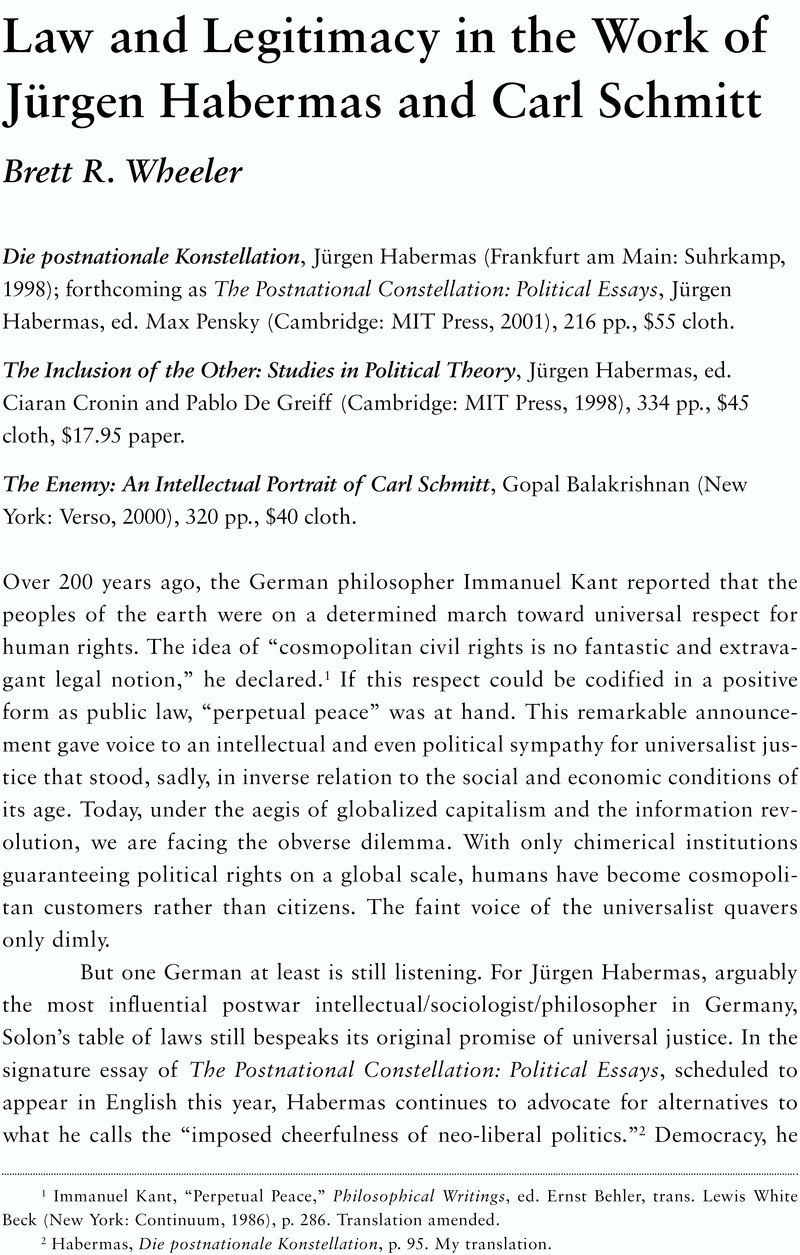Article contents
Law and Legitimacy in the Work of Jürgen Habermas and Carl Schmitt
Published online by Cambridge University Press: 28 September 2012
Abstract

- Type
- Review Essays
- Information
- Copyright
- Copyright © Carnegie Council for Ethics in International Affairs 2001
References
1 Kant, Immanuel, “Perpetual Peace,” Philosophical Writings, ed. Behler, Ernst, trans. Beck, Lewis White (New York: Continuum, 1986), p. 286Google Scholar. Translation amended.
2 Habermas, , Die postnationale Konstellation, p. 95Google Scholar. My translation.
3 Schmitt, Carl, Verfassungslehre (Berlin: Duncker & Humblot, 1928Google Scholar).
4 Balakrishnan, , The Enemy, p. 76Google Scholar.
5 See Habermas, Jürgen, The Structural Transformation of the Public Sphere: An Inquiry into a Category of Bourgeois Society, trans. Burger, Thomas and Lawrence, Frederick (Cambridge: MIT Press, 1991)Google Scholar.
6 Habermas, , Inclusion of the Other, p. 4Google Scholar.
7 See Habermas, Jürgen, The Theory of Communicative Action, 2 vols., trans. McCarthy, Thomas (Boston: Beacon Press, 1984, 1987)Google Scholar.
8 Habermas, , Inclusion of the Other, p. 199Google Scholar.
9 IbidGoogle Scholar.
10 Balakrishnan, , The Enemy, p. 264Google Scholar.
11 Balakrishnan, , The Enemy, p. 177Google Scholar.
12 Habermas, , Inclusion of the Other, p. 137Google Scholar.
13 Ibid., p. 132Google Scholar.
- 5
- Cited by




